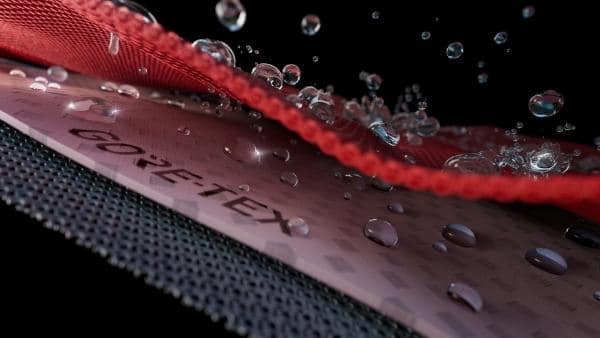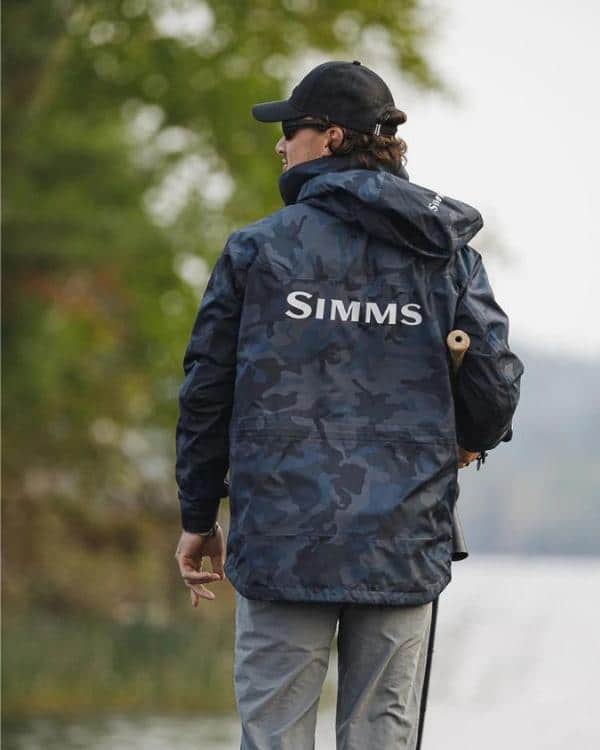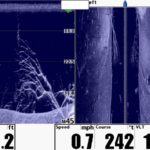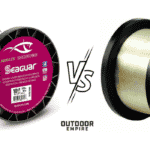An unexpected storm can turn a pleasant fishing trip into a miserable outing in a hurry. Foul weather rain gear allows you to enjoy your favorite activity in almost any weather condition. However, gear that gets too dirty can lose its waterproofing ability. Fortunately, there’s an easy solution to this problem. Learn how to wash wet weather gear.
Most foul weather rain gear is machine washable and can be tumble or line-dried, but check the manufacturer’s instructions for your exact model to be sure. When necessary, reactivate your gear’s durable water repellent coating by using a wash-in or spray-on product.
Many fishermen fear that putting their gear in the washing machine will destroy the waterproof coating. However, it actually can make it work better. Read on for details.
What You Need To Wash Rain Gear
- Washing machine
- Dryer
- Technical fabric cleaner
- Durable waterproof repellent spray or wash
- Iron
- Towel or cloth
See the links near the end of the article for specific product recommendations.
Recommended: Which Grundens To Buy: A Detailed Grundens Bib Comparison
How To Wash Wet Weather Gear: Step-by-Step Instructions
There is a four-step process for how to wash wet weather gear. It usually takes between three to 24 hours, depending on the manufacturer’s instructions for drying your garment.
This process applies to technical woven fabrics such as Gore-Tex or similar. If your fishing bibs or foul weather gear are made of PVC, rubber, or similar material, these directions won’t apply. That kind of gear will need to be hand washed and cannot go through a washing machine or dryer. Again, check the manufacturer’s instructions.
Step One: Spot Treat Stains by Hand
- Read the manufacturer’s instructions.
- Spot treat stains with a small amount of tech wash.
- Allow the garment to sit for a few minutes before rubbing or buffing the stained area to loosen the debris.
Step Two: Wash Gear in Your Washing Machine
- Check all the pockets and remove any objects.
- Zip the front, pockets, and pit zips.
- Fasten loose straps and flaps.
- Wash foul weather gear separately from other laundry.
- Do not wash more than two items at a time.
- A technical fabric cleaner is recommended because the additives in some detergents can degrade the performance of your gear. Do not use powdered detergent, bleach, or fabric softener.
- Read the instructions on the cleaner you are using and add the specified amount to the detergent dispenser of your washing machine three minutes after you start the wash. Waiting allows the product to spread throughout the water and coat the items evenly.
- Wash on the normal cycle.
- Run the rinse cycle a second time.
Step Three: Re-Waterproof Your Gear
Now that you know how to wash wet weather gear, this step covers reactivating the DWR coating.
For Rain Gear Without a Liner
- Add a wash-in waterproofing product to the detergent dispenser.
- Wash gear on the delicate cycle.
For Lined Foul Weather Fishing Gear
- Remove the garment from the washing machine and hang it to dry.
- Apply a spray-on waterproofing product while the garment is still wet. Spray about 10 inches away from the garment to achieve an even coating. Make sure you get the cuffs and back of the shoulders where waterproofing wears off the most easily.
- Look for dry spots and respray them.
Step Four: Dry Your Gear
- Follow the instructions on the care label
- Unlined gear can be tumble-dried on a warm setting or air-dried. After the initial drying, put it in the dryer on warm for 20 minutes to reactive the DWR coating.
- Most gear takes about 24 hours to air dry
Top Manufacturers of Rain Gear for Fishing
Grundéns
Grundéns manufactures a popular foul weather gear line that ranges from lighter-weight jackets to high-end commercial and recreational gear. Their flagship products are primarily constructed from a combination of nylon and GORE-TEX® with DWR coatings.
Simms
Simms offers a range of foul weather gear to suit a variety of uses. Their insulated fishing jackets feature PrimaLoft Silver insulation. Other materials commonly used include polyester, nylon, spandex, GORE-TEX®, TORAY®, and DWR coatings.
Gill
Gill makes a line of stylish foul weather gear that includes a special edition jacket made from reclaimed plastic bottles and recycled fibers. It utilizes XPLORE® 2-layer fabric construction and XPEL® fabric technology.
Related: Grundens vs Simms: Comparing the Best Foul Weather Rain Gear
Common Rain Gear Materials

Most sportfishing foul weather gear is constructed from waterproof breathable materials with a DWR coating. These materials allow sweat and condensation to escape garments to keep you comfortable while preventing water from weather conditions or spray from entering the garment.
These materials aren’t as waterproof as the PVC materials often used by commercial fishermen, but they are more comfortable to wear.
GORE-TEX®
GORE-TEX® is one of the most popular materials used in foul weather gear. It is constructed from a mineral called fluorspar. The material has tiny holes that are too small for water from rain and spray to penetrate the material but allow condensation and sweat to escape.
This makes GORE-TEX® ideal for water and windproof yet breathable, foul-weather gear.
The material on its own isn’t durable enough to use in clothing, so garments made with GORE-TEX® laminate the material into other kinds of fabric. A DWR coating is applied to this fabric to prevent water from soaking into it.
Gore inspects all companies that use its fabric. This ensures they glue, tape, and sew the fabric correctly to maintain its weather resistance.
Step-by-Step Instructions for Washing GORE-TEX® Foul Weather Gear
Gore’s recommendation for how to wash wet weather gear varies only slightly from the general advice:
1. You can wash GORE-TEX® with other laundry, but do not wash with heavily soiled garments.
2. Tumble dry using the gentle cycle and warm setting on your dryer, unless the garment care instructions tell you to hang dry the garment instead. Do not dry at high temperatures. Gore recommends line-drying to reduce energy consumption and environmental impact.
Stain Removal
1. Use the same detergent you plan to wash the garment in. Gore does not recommend using stain removers.
2. Rub some detergent onto the stained area.
3. Wash using your washing machine’s prewash cycle or if your machine does not have a prewash cycle, presoak the garment.
4. Wash per the instructions above.
GORE-TEX SHAKEDRY™ Products: Special Instructions
Do not apply DWR to GORE-TEX® products with a persistent beading surface, such as GORE-TEX® SHAKEDRY™. These garments have no textile outer layer or DWR coating. Machine wash on delicate. Do not dry clean, tumble dry, bleach, or iron.
Dry Cleaning
GORE-TEX®, except for SHAKEDRY™, can be dry cleaned; however, check the care instructions first. If you dry clean the garment, ask for distilled hydrocarbon solvent rinse and a spray-on or wash-in DWR repellent treatment with heat reactivation. Home dry cleaning is not recommended.
Saltwater
Saltwater will not harm your GORE-TEX® fabric. However, salt does attract moisture, so it is a good idea to remove it from your foul weather gear after it has been exposed to saltwater.
Rinse your GORE-TEX® gear after you have been fishing or boating in saltwater. Freshwater works best, but if you don’t have access to it, rinsing in seawater is better than not rinsing.
Durable Water-Repellent Coatings
Most rainwear is treated with a water-repelling coating that causes water to bead up and roll off the garment instead of soaking it into the fabric. This coating doesn’t work properly when it gets too worn or dirty.
Signs Your DWR Coating Needs to be Restored or Replenished
Learning how to wash wet weather gear is only part of the equation. You also need to know when to restore the DWR coating. If you notice these signs, try restoring or replenishing your water-repellent coating:
- Fabric appears wet on the outside
- Garment collects condensation on the inside
- Gear feels heavier
Nylon
Some cheaper raingear is made from nylon coated with DWR. Pro foul weather gear incorporates nylon with other weatherproofing materials, such as GORE-TEX® or TORAY®. Nylon tricot is often used to reinforce other fabrics.
Polyester
Polyester fabrics are frequently used in the liners of insulated raingear.
Product Recommendations
Click on the product name to check the price on Amazon.
Gear and Clothing Washes
Odor and Stain Removers
DWR Replinshers
Frequently Asked Questions
Can You Wash Rain Gear in the Washing Machine?
It depends on the materials, but for the most part, yes. The manufacturer recommends machine washing GORE-TEX® products because it helps keep the microscopic pores from getting clogged.
Avoid using regular laundry detergents. They leave a residue on your gear that attracts water and degrades the water-repellent properties.
Can You Wash Grundéns?
Grundéns’ recommendation for washing fishing bibs or wet weather gear is to use Nikwax Tech Wash or similar products for washing Grundens gear and then hang it to dry.
How To Wash Gill Foul Weather Gear?
Gill recommends machine washing with a non-biological detergent and tumble dry on low. Do not bleach, iron, or dry clean.
How To Remove Odors From GORE-TEX®?
The best way to avoid smelly foul weather gear is never to put it away wet and dirty. This can cause mold and mildew to grow. If you already have a moldy GORE-TEX® jacket, these steps may help:
1. Read the manufacturer’s instructions.
2. Soak the item in a mixture of one part white vinegar and one part water overnight.
3. Follow the GORE-TEX® instructions for cleaning the garment.
Conclusion
There is no need to fear the washing machine when it comes to washing wet weather fishing gear. Most products can be machine washed, and keeping your gear clean helps it function better.
Remember always to follow the manufacturer’s instructions and avoid putting your gear away when it is dirty or wet. The extra time you take to care of your gear will pay off the next time you get stuck out in the weather.






